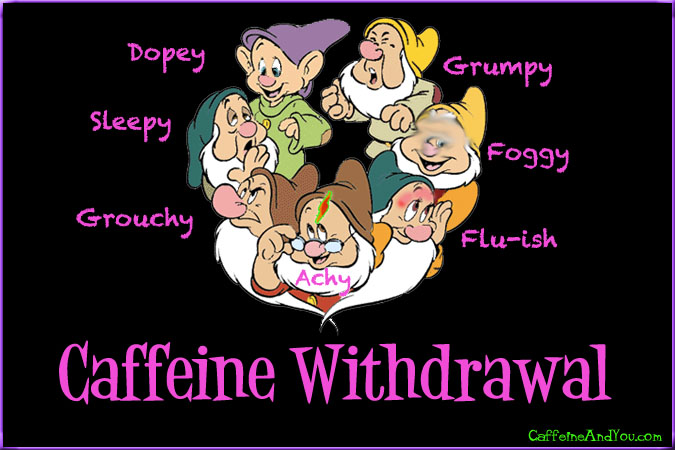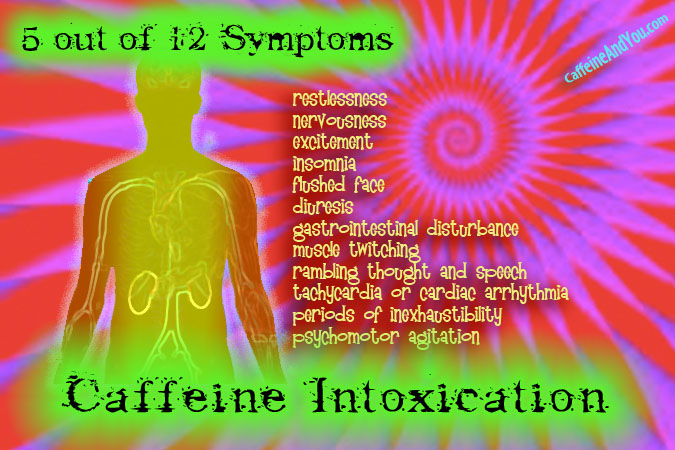 If the world’s supply of caffeine suddenly dried up, we’d have a global headache on our hands – literally. Most of our heads would be pounding. Throngs of us would feel grumpy, dopey, sleepy, grouchy, achy, depressed, or all of these. In other words, we’d be suffering from Caffeine Withdrawal Syndrome.
If the world’s supply of caffeine suddenly dried up, we’d have a global headache on our hands – literally. Most of our heads would be pounding. Throngs of us would feel grumpy, dopey, sleepy, grouchy, achy, depressed, or all of these. In other words, we’d be suffering from Caffeine Withdrawal Syndrome.
Caffeine Withdrawal Syndrome was added in 2013 to The American Psychiatric Association’s Diagnostic and Statistical Manual of Mental Disorders. But why?
Apparently, people were experiencing symptoms, but doctors and patients weren’t identifying caffeine – or rather caffeine cessation – as the cause. Misdiagnoses can include flu, sinus problems, medication side effects, migraines and more. The symptom checklist helps pinpoint when caffeine, and not some other condition, might be the reason a patient is feeling so bad – bad enough to disrupt normal functioning in daily life. Or the patient may have more ambiguous feelings, like being less motivated at work or less social than normal, and these feelings can be mild or severe.
Caffeine Withdrawal Syndrome
The criteria include 3 or more of these symptoms (within 24 hours of stopping or reducing caffeine).*
1. Headache (some say it’s the worst headache of their lives)
2. Marked fatigue or drowsiness (can’t stay awake, no matter what)
3. Mood is dysphoric, depressed, or irritable (just feeling bad or unwell)
4. Difficulty concentrating (foggy brain, unfocused)
5. Flu-like symptoms (nausea, muscle-aches, vomiting, stiffness)
In addition, these symptoms must be bad enough to disrupt your world and cause distress. Social, work, and other functional parts of your life become impaired. And no medical, mental condition, or other reason can explain why you feel this way. Plus, the symptoms come on fast, starting within 12 to 24 hours of the last caffeine dose.*
Fortunately, the symptoms do go away. They peak after about a day or two, but some can last up to nine days and the headaches can occur for as long as three weeks. Ouch!
Unintentional Withdrawal – and Relief
Have you ever had to give up caffeine for a day or more? Hospital procedures, traveling, going to war (or to jail), being pregnant, fasting, religious practices – any sudden break from your caffeine routine can cause real problems in how you feel and behave.
We don’t think of daily caffeine use as being an addiction, partly because it’s so widespread. Yet symptoms of caffeine withdrawal happen as quickly as overnight (when we crave our first cup of coffee or tea).
Can’t take the pain or discomfort of withdrawal? Drink a cup of coffee, or tea, or cola. That’s right, consuming caffeine ends the symptoms in as little as 30-60 minutes. Which is why so many people would rather keep their habit. (For some people, severe withdrawal bouts mean major depression, staying in bed all day, missing important meetings or social events, not tending to children or pets, not going to work, or unbearable head pain.)
If you really want to cut out the caffeine, experts say the best way to quit is slowly. Taper off the dosage and the frequency. Give your system a chance to adapt. Even just a fraction of your normal dose, say a half-cup of coffee vs. the usual 2 cups, can be effective in stifling symptoms. And about those headaches…read the ingredients label before popping a painkiller; many painkillers include caffeine for its analgesic effects. If you take Excedrin, for instance, you may blunt the pain, but you’re still ingesting caffeine.
NEXT: What are the signs of Caffeine Intoxication? It can happen to anyone of any age, even first time users…

